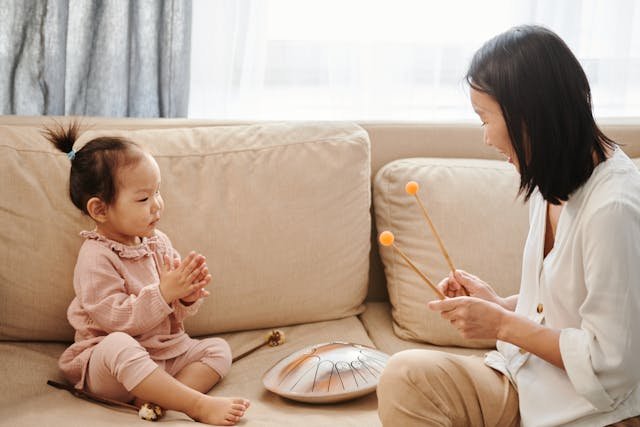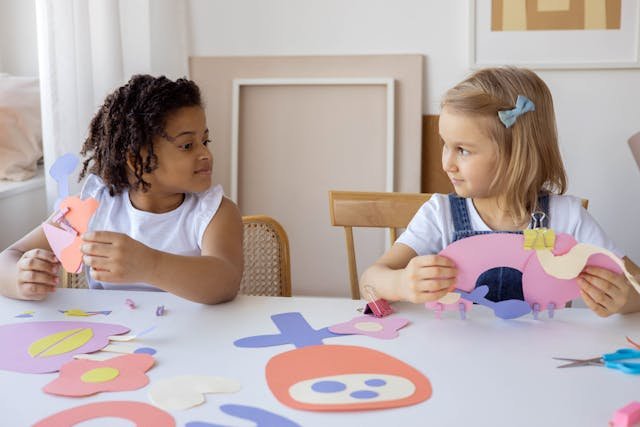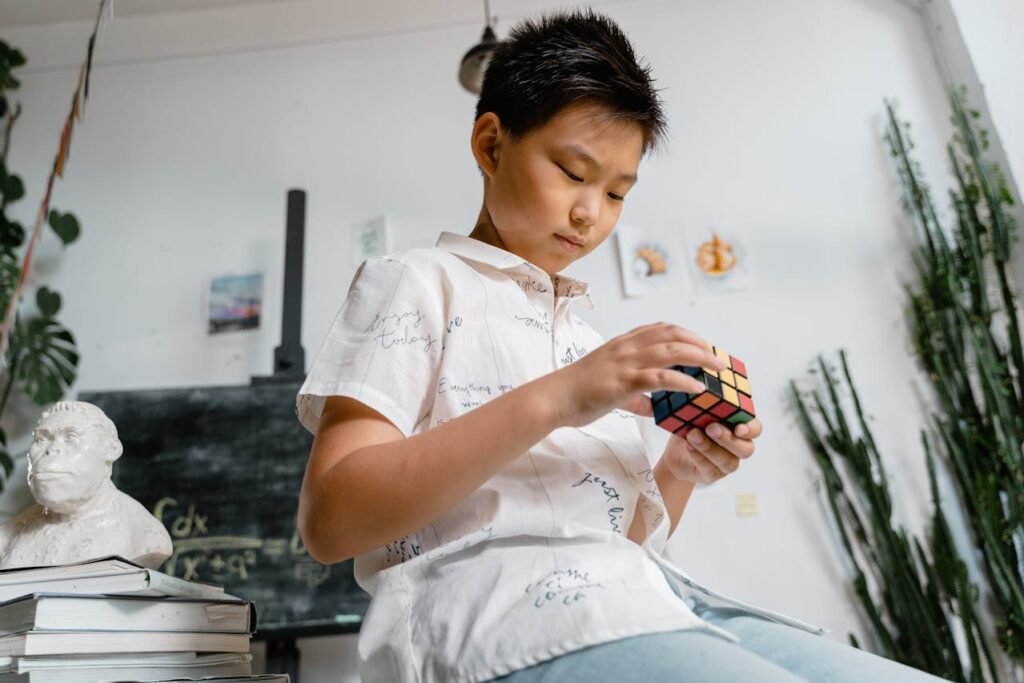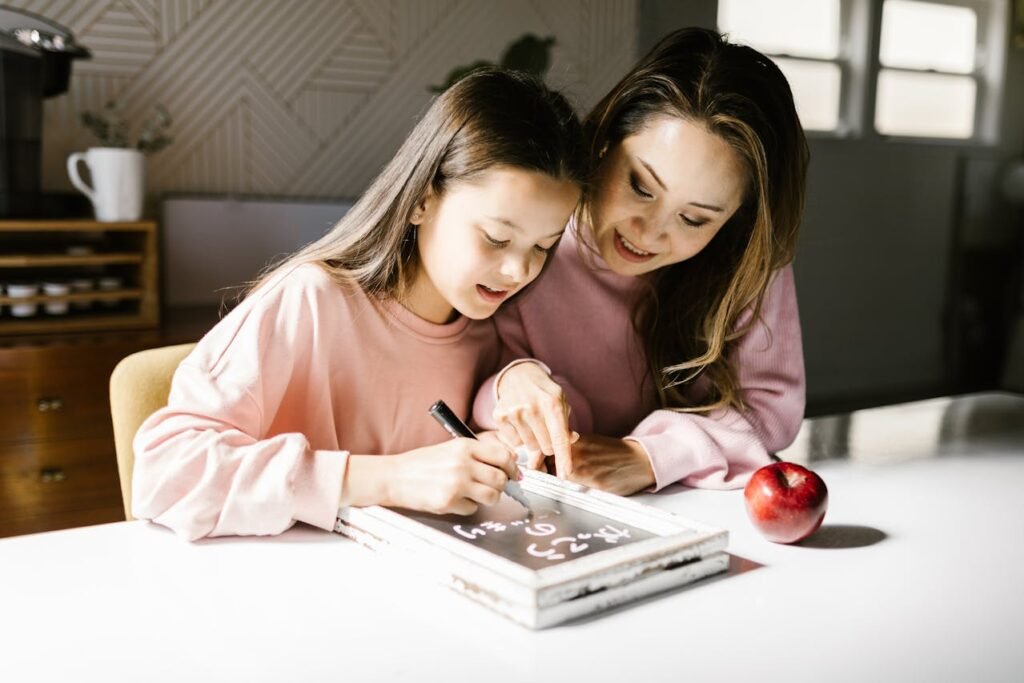Have you ever tried to do your homework while feeling angry or upset? It’s hard, isn’t it? Even reading a simple sentence feels impossible when your mind is full of big feelings.
That’s because our emotions and our brains are deeply connected. When we feel calm, it’s easier to focus, listen, and understand. But when we feel out of control, it’s like our brain shuts the door to learning.
This is why emotional regulation — which simply means managing your feelings in a healthy way — is one of the most powerful tools for learning.
At Debsie, we don’t just teach kids science, math, or writing. We help them grow into curious, confident learners who know how to handle stress, stay calm during hard tasks, and keep going even when they make mistakes.
What is Emotional Regulation?
Emotional regulation means being able to notice your feelings, understand them, and choose how to respond — instead of just reacting without thinking.
It doesn’t mean never feeling angry or sad. All feelings are okay. It just means learning how to handle those feelings in a way that’s helpful, not harmful.
Think of it like this: Imagine your brain is a classroom. When emotions are calm, it’s like the classroom is quiet. The teacher (your thinking brain) can talk. You can listen, learn, and think clearly.
But when emotions get too big — like stress, fear, or frustration — it’s like the classroom is full of shouting. You can’t hear anything. Learning shuts down.
This is why emotional regulation is so important, especially for children and teens. When kids can calm their minds, they can open the door to focus, memory, creativity, and problem-solving — all the things we need for learning.
Why Emotions Affect Learning

Learning doesn’t just happen in the brain. It also happens in the heart.
Every time a child opens a book, joins a class, or tries to solve a problem, they bring their feelings with them. And these feelings — whether they’re calm, happy, nervous, or frustrated — have a huge effect on how well they learn.
The Brain and Emotions Are Closely Connected
Inside the brain, there are different parts that work together. One part helps us think clearly and solve problems. Another part, called the amygdala, is in charge of emotions. It’s like the brain’s alarm system — always watching for danger, stress, or anything that feels “too much.”
When a child feels safe and relaxed, the amygdala is calm. This allows the thinking part of the brain — the prefrontal cortex — to work smoothly. That’s when learning happens easily. The child can focus, remember, and make smart decisions.
But when a child feels scared, angry, or overwhelmed, the amygdala gets loud. It tells the brain, “Something is wrong!” And suddenly, the thinking part shuts down. The brain goes into survival mode — not learning mode.
It’s like trying to do a puzzle in a room full of fire alarms. Even if you know how to do it, you just can’t think clearly.
Stress Blocks Learning
Stress doesn’t always look loud. Sometimes it shows up quietly — like a stomachache before school, fidgeting during a lesson, or feeling frozen during a test.
When a child feels stressed, even if they studied, their brain may struggle to:
- Pay attention
- Recall what they’ve learned
- Stay calm enough to try
This is why students sometimes forget answers they knew just yesterday — because stress can temporarily block access to memory.
Emotions Shape Behavior in the Classroom
Let’s take an example. A child feels nervous about reading aloud. Their hands get sweaty. Their voice shakes. They may even say, “I don’t want to do it,” or pretend to be sick. That’s not because they’re lazy. It’s because fear is louder than confidence at that moment.
Another child may feel angry because of something that happened at home. They sit in class, but their mind is far away. They don’t raise their hand, don’t follow instructions, and stop trying. Again, this is not because they don’t care — it’s because their emotions are too heavy to carry while learning.
These feelings can’t just be pushed away. They need to be noticed, named, and gently calmed. Only then can the child’s full attention return to learning.
Calm Minds Are Ready to Learn
When children feel safe, supported, and seen, their brains open up. They can focus. They can take risks, like trying new words or solving hard math. They can say, “I don’t understand,” without shame.
That’s why emotional regulation — the ability to manage feelings — is not just “extra.” It’s essential for learning. When the heart is steady, the mind is clear. And that’s when learning becomes joyful, deep, and long-lasting.
Emotional Regulation Helps Build Stronger Learners

Kids who learn to regulate their emotions are not just calmer — they’re smarter in how they learn.
Here’s what changes:
They can focus longer, even when a task is hard.
They’re more willing to try again after making mistakes.
They listen better, ask better questions, and stay open to feedback.
They feel more confident, which helps them explore new ideas.
They can study better at home, even if the environment isn’t perfect.
When emotions are in check, the brain has more energy for thinking, remembering, solving, and growing.
That’s why at Debsie, we don’t just teach the subject — we help every child build the emotional tools to handle the subject. Because real learning isn’t just about knowing facts. It’s about being ready in your mind and heart to understand them.
How Kids Learn Emotional Regulation
Emotional regulation — the ability to manage feelings — isn’t something children are born knowing how to do. It’s a learned skill, just like riding a bike or tying shoelaces. And just like those skills, it takes time, practice, and support to get good at it.
Many adults forget that even the smallest feelings can feel huge to a child. A forgotten toy, a messy room, a wrong answer — these can spark big emotional storms inside a little body. But that’s okay. Those storms are part of growing up.
What matters most is that children learn how to handle those big feelings in ways that are healthy and helpful. That’s emotional regulation. And here’s how it happens.
Step 1: Noticing the Feeling
The first part of emotional regulation is noticing when something is happening inside. This can be hard for kids. They might not have the words yet, or they might not even realize they’re upset until they explode.
That’s why adults play a big role here. Parents and teachers can gently say what they see. For example:
- “It looks like you’re feeling frustrated because your block tower fell.”
- “I notice you’re very quiet after school. Did something bother you today?”
By naming the emotion out loud, adults help kids connect the feeling with the situation. Over time, children start to notice their own feelings before they get too big.
Step 2: Giving the Feeling a Name
Once kids start to feel their emotions, the next step is naming them. This sounds small, but it’s a big step toward self-control.
When a child can say, “I’m sad,” or “I feel nervous,” they take back some power. Instead of the feeling controlling them, they begin to understand it.
You can help by teaching basic feeling words — happy, sad, mad, scared, excited, worried — and showing that all feelings are okay. There are no “bad” emotions. Just big ones that need care.
Step 3: Learning What to Do With the Feeling
Now comes the heart of emotional regulation: choosing what to do when a big feeling shows up.
This is where children learn coping tools — simple actions that help calm their bodies and minds.
Some common strategies include:
- Taking three deep breaths
- Asking for a short break
- Hugging a stuffed toy
- Drawing how they feel
- Saying calming words like “I can do this” or “I’m safe”
These strategies won’t work perfectly at first. That’s okay. Kids may forget, or resist, or need reminders. But with gentle practice, these small tools become big habits.
Step 4: Reflecting After the Feeling Passes
After the emotion has calmed, it’s helpful to talk about what happened. Not in a scolding way — but in a curious, caring way.
You might say, “I saw you got really upset when your game didn’t load. What could help next time that happens?” This gives the child a chance to think and learn from the moment.
Over time, this reflection helps kids understand their patterns. They begin to know what triggers certain emotions — and what helps them stay in control.
Why This Matters So Much
When children learn emotional regulation, they don’t just cry less or shout less. They become more confident. They stay in control during tests. They speak kindly when they disagree. They don’t give up when learning feels hard.
These aren’t just emotional skills — they’re life skills. And they make every subject, every class, every challenge easier to face.
Real-Life Example: The Child Who Shuts Down During Tests

Let’s imagine a child named Riya. Riya is smart. She does well in class discussions. But every time there’s a test, she freezes. She stares at the page. She forgets things she knew just the day before. Sometimes she even feels like crying.
This isn’t because Riya isn’t smart. It’s because her brain is overwhelmed. Her emotions — fear of failure, worry about making mistakes — are louder than her memory.
Now imagine if Riya learned to notice that fear. What if she had a quiet moment to breathe before the test? What if she told herself, “I’ve practiced. I’m ready. I can do this”?
Her brain would stay calm. Her memory would work better. Her confidence would grow. All because she knew how to handle her emotions.
This is emotional regulation in action — and it changes everything.
Why Emotional Regulation Matters in Every Subject
It doesn’t matter if a child is learning math, reading a story, doing science, or writing a speech — emotions are always in the background. And if those emotions are too big, they block the brain from doing its best work.
In math, frustration can stop problem-solving.
In reading, boredom or stress can make it hard to focus.
In science, fear of being wrong can make kids stop asking questions.
In writing, self-doubt can silence creativity.
When kids learn to regulate their emotions, they stay open. Open to new ideas. Open to making mistakes. Open to learning from them.
And that openness is where real learning lives.
How Parents Can Support Emotional Regulation at Home
Home is where children first learn about feelings. It’s where they start to notice how people react when they’re happy, sad, angry, or upset. So, as a parent, you don’t have to be perfect — but you can be a calm guide.
One of the best things parents can do is to model calm behavior. When you speak softly during stressful times, take deep breaths when you’re overwhelmed, or say things like “I’m feeling upset, but I’ll take a moment to calm down,” you’re showing your child how to do the same.
Another powerful way to help is by naming emotions out loud. If your child is feeling nervous about a school presentation, you might say, “It’s okay to feel nervous. That just means it’s important to you.” When feelings are named, they feel smaller — and easier to handle.
You can also help by building simple routines. Children feel safer and more in control when their day has a steady rhythm — like waking up at the same time, eating regular meals, having a quiet space for homework, and winding down before bed.
And finally, make time to connect. Even 10–15 minutes a day of quiet, focused time — talking, playing, or just sitting together — gives children the emotional strength they need to face challenges.
How Teachers Can Build Emotional Skills in the Classroom

In the classroom, emotional regulation is just as important as knowing the subject. In fact, it’s what makes learning possible in the first place.
Teachers can support this by creating a calm environment. That doesn’t mean silence. It means a space where students feel safe, heard, and respected. When children know they won’t be laughed at for asking a question or scolded for needing help, they relax. And when they relax, they learn better.
One helpful strategy is to start class with a simple check-in: “How is everyone feeling today?” Letting students name their emotions — even with just one word or a picture — builds awareness and trust.
During tough lessons or group work, remind students that mistakes are part of learning. Saying things like, “It’s okay to get it wrong — that’s how we learn,” helps reduce fear and shame.
Teachers can also give students small “reset tools” like:
- A few deep breaths before a test
- A quiet corner with fidget tools or calming visuals
- Encouraging phrases like “You’ve done hard things before — you can do this too”
These tiny tools create big results. They help children stay calm, recover faster from stress, and grow their confidence with every lesson.
Emotional Regulation Builds Life Skills, Not Just Academic Success
When we talk about learning, we often focus on school subjects: math, science, reading, writing. But real learning is also about handling life. It’s about knowing how to stay steady when things feel shaky. And that’s exactly what emotional regulation teaches.
A child who learns how to manage big feelings is building something much deeper than just focus. They’re building resilience — the ability to bounce back after something goes wrong. And that’s a skill they’ll use again and again throughout life.
For example, let’s say a child works hard on a school project and doesn’t get the grade they hoped for. If they haven’t learned emotional regulation, they may shut down. They might say, “I’m not smart. I give up.” But a child with strong emotional skills will say, “That was hard, but I can learn from it. I’ll try again.”
That kind of thinking leads to long-term success — not just in school, but in relationships, work, and everyday challenges.
Regulating Emotions Builds Confidence
When a child knows they can handle their feelings, they feel in control. That control brings confidence. And confidence brings courage — the courage to raise their hand, try something new, speak in public, or tackle a tricky math problem.
They’re not afraid to fail, because they trust that they can stay calm and try again. This changes everything. It creates a learner who’s not just smart — but brave.
Over time, emotionally strong children become more willing to:
- Lead a group project
- Explore new subjects
- Make friends and resolve conflicts
- Set goals and keep going
They stop worrying about “being wrong” and start focusing on growing.
Emotional Skills Create Better Communication
Children who learn to understand their feelings are also better at understanding other people’s feelings. They become more empathetic — more able to listen, show kindness, and support their peers.
In group learning, this matters a lot. It helps students work well with others, share ideas, and solve problems as a team. Instead of getting angry when someone disagrees, they stay calm, explain their view, and find a solution.
At Debsie, this is something we focus on every day. In both our live classes and self-paced lessons, we encourage respectful speaking, active listening, and kind feedback. Because learning isn’t just about getting answers right. It’s also about becoming a good human being — someone who can learn with others, not just alone.
How Debsie Helps Children Build Emotional Strength While Learning

At Debsie, we believe that smart minds start with strong hearts. That’s why our approach to teaching isn’t just about finishing the syllabus. It’s about helping each child feel calm, confident, and capable — no matter what subject they’re learning.
Here’s how we do it:
1. We Create a Safe, Supportive Environment
Whether it’s a live class or a self-paced lesson, Debsie makes sure kids feel safe to speak up, ask questions, and make mistakes. There’s no shouting, no pressure, no fear of “getting it wrong.” Just encouragement, patience, and respect.
This kind of setting makes it easier for children to stay calm — even when the lesson gets challenging.
2. Our Teachers Are Trained to Support Emotions
Debsie’s partner teachers are not only subject experts — they’re also trained in emotional awareness. They understand when a child is struggling and know how to guide them gently back to focus.
Our teachers use kind words, clear steps, and calming routines that help kids regulate their emotions in real time. Whether it’s a frustrated 7-year-old learning to read or a nervous 16-year-old solving physics problems, our teachers know how to support both the mind and the mood.
3. We Make Learning Feel Like a Game
Debsie’s digital platform is built with gamification — meaning learning feels like a fun challenge, not a stressful task. Kids unlock levels, earn points, and see their progress. This playful approach helps reduce fear and build resilience.
When learning feels fun and rewarding, kids don’t give up as easily. They learn to keep going, try again, and manage their feelings with a smile — all while actually getting smarter.
4. We Teach Life Skills Alongside School Subjects
In every subject — from math to history to science — we gently include emotional lessons. We help students notice their stress, take mindful breaks, reflect on their growth, and cheer for small wins.
We don’t just want kids to do well on tests. We want them to know how to learn, how to stay calm, and how to believe in themselves, even when life gets hard.
Conclusion: When the Heart Is Calm, the Brain Can Learn
Every child deserves to feel good about learning. But that only happens when the brain is calm and ready — not scared, stuck, or stressed.
Emotional regulation isn’t a “bonus skill.” It’s the foundation. When children know how to handle their feelings, they can handle anything — a tough subject, a tricky test, a hard day, or a new challenge.
At Debsie, we’re here to guide them — not just as students, but as thinkers, dreamers, doers, and kind, brave humans.
If you want your child to grow not only in academics but also in focus, resilience, and confidence — we’d love to meet you.
👉 Join a free Debsie class today and see how we help children grow smarter, stronger, and emotionally ready for anything.
Read next:



